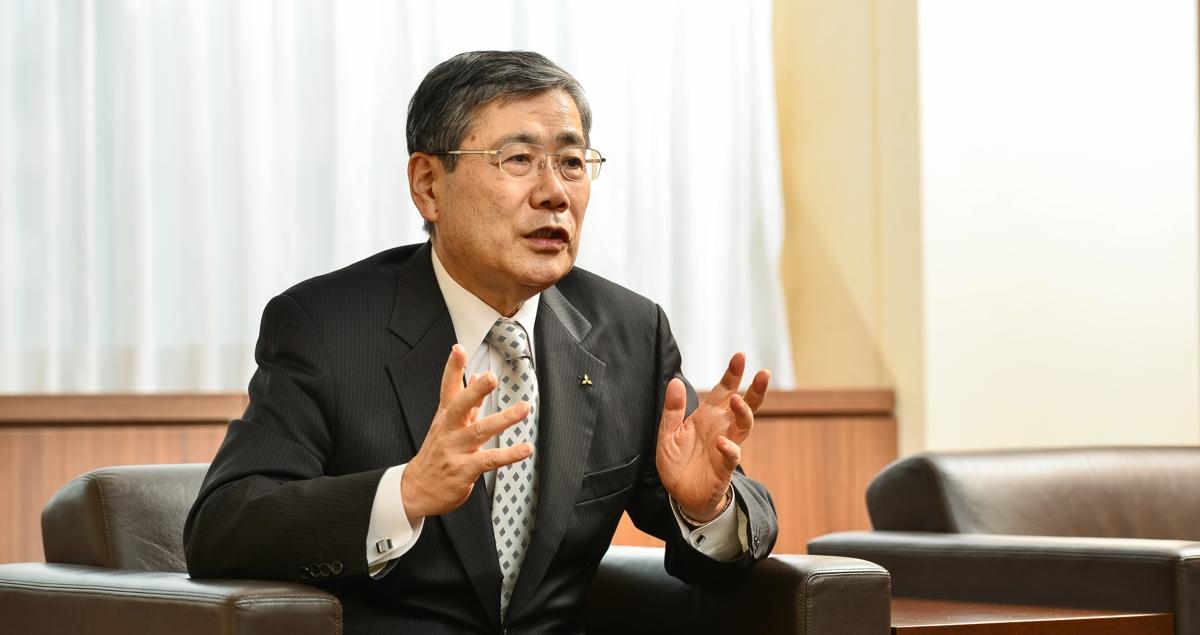Reasons to be optimistic about the U.S. manufacturing renaissance

The future of manufacturing is one of the most talked-about issues in the U.S. right now, and it clearly resonates with the American people. Overseas companies operating within the U.S., many employing thousands of American workers and contributing to the technological strength of U.S. manufacturing, can play an important role in this discussion.
One such company is Mitsubishi Heavy Industries (MHI), a Japanese company with U.S. headquarters in Houston and a significant number of group companies, partners and investments across the U.S. They locally manufacture a range of industrial products, from forklifts, turbochargers and key manufacturing equipment, to massive machinery like gas turbines and carbon capture technologies.
MHI’s President and CEO, Shunichi Miyanaga, is bullish on U.S. manufacturing and plans to expand operations in the United States. He believes that there are opportunities for the company to increase business scale in the U.S. by 20% over the next two years. The U.S. is MHI’s largest market outside Japan, with North America representing $7.5 billion of MHI’s nearly $40 billion total revenue. Miyanaga also anticipates adding more jobs over the next two years, as well as bringing back key technologies that were initially developed in the U.S. – and fine-tuned in Japan – back to the U.S.
Here is an excerpted Q&A.
You have had success in a wide-array of businesses in U.S. and have plans to expand your operations. In what areas do you see growth and what is your strategy moving forward?
I believe strongly that MHI needs to be more proactive in the United States market and increase our direct investment there. We are seeing strong growth in advanced industry and technologies such as ICT, artificial intelligence and others. I am confident in the long-term development and growth opportunities in the U.S.
We also have longstanding partnerships with some of the leading U.S. manufacturers and technology companies to supply parts for civilian aircraft, autos, construction equipment, forklift trucks and more. These partnerships give us a strong base for further cooperation and expansion in the U.S. While many of our competitors sell products in the U.S., we are building factories to make products in the U.S. (for example, our turbine factory in Savannah, Georgia) for both the local market and the Americas region. Going forward, I would like MHI to conduct more of our business within the U.S.
The plant in Savannah makes gas turbines – massive machines that turn natural gas into energy. Is energy going to be a growth area for MHI?
MHI is the number one producer of 250+ megawatt class gas turbines in the United States. Furthermore, we expect that demand for such large-size gas turbines will steadily increase in the United States, especially if the shale industry continues on its current trajectory.
In addition to gas turbines, it’s also important to remember that the United States has abundant coal resources, including both high-quality coal and clean low-grade coal. For the time being, natural gas energy remains popular and widely accepted, but in the future there may be a tradeoff point for adopting advanced, clean coal technology like IGCC (Integrated Coal Gasification Combined Cycle). MHI is a leader in this field and has already had significant successes with this clean technology in Japan and elsewhere.
Coal-driven energy remains controversial in the U.S. and around the world. What differentiates MHI’s energy technology as it is applied in the U.S.?
We believe our technologies give us an edge in achieving significant U.S. growth. In particular, our large-scale and highly efficient gas turbines can take advantage of the current cheaper gas facilities and contribute to sustainability through environmentally friendly technologies. For example, CO2 capture technology developed by MHI is now being utilized in the U.S., with the world’s largest carbon capture system under construction in Texas and due for completion in early 2017. Using MHI technology, this system will capture and store 1.4 million tons of CO2 per year while simultaneously boosting energy production. This is truly a world first, happening right here in the U.S.
Your carbon capture system is interesting but MHI utilizes other technology that started in the United States but has been absent for many years. You’ve stated that you want to bring technology back to the U.S., which will create demand for more jobs. Please explain.
Many of MHI’s technologies trace their origins to the U.S. For example, some of MHI’s steel processing technology was originally from the U.S., developed on license from companies here. Because of structural changes in the U.S. manufacturing industry, many of these companies disappeared, but we would like to bring these technologies back to the U.S.
Previously, it had been impractical for us to reintroduce such technologies to the U.S., but with recent technological advances, it is possible to do so quickly and smoothly. For example, the technologies used for our U.S.-based gas turbine assembly are standardized, from our factories in Savannah, Georgia, to Takasago in Japan. They use the same assembly processes and the same equipment, which requires highly skilled individuals to utilize and maintain the technologies.
The U.S. is of course globally renowned for the innovative strength and creativity of its advanced industries and ICT. However, the country also needs basic infrastructure technology. Maintaining such industries at some level domestically is important and MHI is well positioned to support this. In this way we can contribute to the United States, working together with the American people. That is my dream.
If you are able to continue to bring these technological breakthroughs back to the U.S., you’ll need a highly trained work force. Are you concerned about being able to find enough skilled workers?
With our efforts to bring manufacturing back to the U.S., we are focusing on high-end technology and skills. For large-scale gas turbines, for example, we need to operate repair and maintenance shops for all the equipment we sell. This requires workers with skill and precision.
We are focusing our business on adding more value and on integrated engineering services, so one of the most pressing concerns for me is the impending skills gap employers will face in the coming years. This gap is particularly alarming in the manufacturing sector where, according to some studies, 2 million U.S. manufacturing jobs may go unfilled due to a lack of skilled candidates. This is certainly an issue we must address promptly. One solution is a strong focus on skills transfer. At MHI, we ensure that newer recruits receive on-the-job training and guidance from our experienced employees, which helps to foster the next generation of engineers and specialists. In this way, essential manufacturing skills and craftsmanship can be retained, bringing vitality to the future of manufacturing in the U.S. and elsewhere.
You went to school in the U.S and worked at MHI operations across the country. Is that why this is so important to you?
I have a strong personal connection and fondness for the U.S. Back in 1979, I was lucky enough to study at the University of Chicago’s Booth School of Business. Having completed my studies, I then returned to the U.S. in 1983 where I worked for various businesses, including a Japan-US joint venture steel business, and later at U.S. Steel. This gave me first-hand experience of the strength and vitality of U.S. industry.
I continue to have strong interest and close ties with the U.S. and always enjoy my frequent visits there. I have for some time been carefully considering how and when to expand MHI’s presence in the U.S., and I believe that time is now. With the advancements we’re making in the energy sector with our gas turbines and carbon capture technology, the excitement around our regional jet business and the tremendous growth in our forklift operation, we couldn’t ask for a better opportunity.





